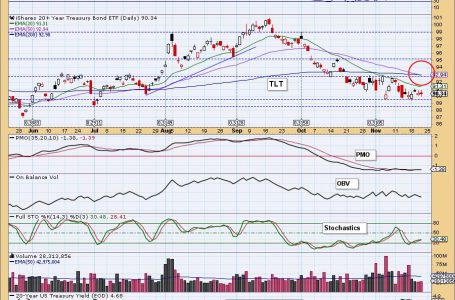Pentagon ‘fundamentally rejects’ ICC decision to issue arrest warrant for Netanyahu
QCinema and the growing appetite for films of the Philippine audience

THE QCINEMA International Film Festival ended this week, its theme “The Gaze” highlighting the wide net of perspectives it has cast across its lineup.
This edition, BusinessWorld took note of the screenings that resulted in packed theaters, reflecting the types of films that attract Philippine audiences even in the age of streaming.
“In our journey to become one of the leading film events in Southeast Asia, we’ve observed how things have been selling very well this year compared to years before. It’s a good indicator that there is a solid audience here,” QCinema festival director Ed Lejano said during closing night on Nov. 17.
The festival also introduced for the very first time a website and online app to book tickets, with some selling out faster than others throughout the run from Nov. 8 to 17.
Here are reviews and notes on three of the films where this writer observed packed theaters.
LOST SABUNGEROSDirected by Bryan Brazil
GMA Public Affairs and GMA Pictures came full force to the opening night of their first-ever full-length investigative documentary, Lost Sabungeros, on Nov. 9. Before getting three screenings — now four, after another was added on closing day — as part of QCinema, it was pulled from the Cinemalaya Independent Film Festival “due to security concerns” back in August. “We were upset about the cancellation because there was no clear explanation, even up to now,” said director Bryan Brazil at the sidelines of opening night.
This writer caught the third screening at Quezon City’s Gateway Mall, in the middle of a Tuesday, which is usually not a popular time to catch a movie, but surprisingly all the seats were filled. As per the QCinema team, all of its screenings were like this, showing just how much sway that online clamor for the truth really has. Since 2022, the mystery behind the 30+ missing cockfighters has captured the public’s imagination, Lost Sabungeros now putting it in context of similar cases such as former president Rodrigo R. Duterte’s drug war (which, coincidentally, is now the subject of ongoing Congressional hearings).
Because it has the format of a standard TV documentary, its research done by the folks behind documentary series Kapuso Mo, Jessica Soho but put together by Mr. Brazil to make a full film, Lost Sabungeros recounts the timeline of events with news-like brevity and strong testimonies. Its sense of storytelling doesn’t have to be too immersive, with talking heads interviews doing their share of conveying the message with some basic supplementary animation, but the film’s keen eye for the vicious underbelly of the e-sabong industry (online cockfighting) and the flawed justice system successfully induces reactions from the audience.
Those who have already watched publicly available interviews with government officials will find nothing new in the documentary. The loved ones’ cries for justice also carry all the narrative weight that the filmmaking itself could have carried visually and thematically, but it is a decent first attempt at a documentary film from GMA. It is no surprise that the Filipino audience, seeking the truth behind the events around the 30+ sabungeros’ disappearances, and wading through the muddle of information (true and not) found online, appreciates this effort that puts all the details together and keeps the discourse alive.
ANORADirected by Sean Baker
In a similar vein, Philippine audiences are also wary of censorship when it comes to foreign films coming into the country. Most recently, the Cannes Film Festival’s Best Screenplay winner The Substance got an R-16 cut, with only two cinemas — Gateway Mall and Cinema 76 — screening the R-18 version. (According to netizens, the cuts were mainly bits and pieces of nude scenes of the lead actresses and the shortening of a scene where a character is bashed violently into a mirror.)
Anora, Cannes’ Palme d’Or-winning filmby American filmmaker Sean Baker, might receive such cuts as well if it gets a commercial release, this time for sex scenes that the local review board could perceive as excessive. The film is about exotic dancer Anora who enters into a whirlwind romance with a Russian oligarch’s son in a bid for a better life. Universal Pictures Philippines, set to distribute it in the country before the year ends, may be heartened by QCinema’s experience — tickets sold out within seconds on the website and app (the festival film had no cuts, but for a commercial release a distributor has to accept the movie ratings board’s decision).
An ambitious wild ride of a screwball comedy, Anora lays bare all that is destructive about the American pursuit of happiness — how it is so intrinsically tied with wealth, and the all-consuming labor that the average person must give, heart and soul, to have even a chance at that wealth.
Mikey Madison as the titular character gives what is easily the standout performance here, her journey from spunky hustler gunning for love and success to wronged woman fighting to keep what little she has, fast becoming the most memorable big screen role of the year.
This hilarious tragic comedy — which gets more and more soul-crushing as Anora’s shotgun marriage with spoiled, rich mama’s boy Ivan unravels — also has a solid, engaging ensemble. The ragtag crew of Russian-Armenian henchmen are fun to watch — Toros with his fatherly frustration and old-man mentality, Garnick as the loser who gets progressively more and more beat up as the trip goes on, and Igor with his disarming looks of respect, concern, even love. This trainwreck of an American dream makes for a very enjoyable film, but it may leave people wanting more from Anora beyond her moments of bliss, frenzy, and comedy. The few moments of silence, when she looks out the window to make a decision or to contemplate a failure, are what truly make this film.
RANDirected by Akira Kurosawa
Finally, Akira Kurosawa’s legendary 1985 film Ran injected the festival with a dose of Shakespearean tragedy in the form of Japanese theatrics. This writer went to its fourth and final screening in QCinema, at Shangri-La Mall, where there were nearly no empty seats. While it’s easy to attribute its popularity to being a classic for cinephiles, another factor is Filipinos’ current strong preference for Japanese pop culture. The mall was coincidentally holding its Studio Ghibli Weekend at the same time in partnership with the Japan Foundation, where tickets sold out immediately.
Mr. Kurosawa’s masterfully shot tragedy came to life impressively on the big screen that allows one to appreciate its grand scale and scope way better than when it is watched on a meager laptop or TV screen. The visually stunning set pieces, brightly colored traditional costumes, and sheer number of extras forming the armies that tear down Hidetora Ichimonji’s kingdom piece by piece — it’s no wonder that Filipino film enthusiasts filled the theater’s seats to see it.
Most of all, Ran reveals the folly of man, how honest affection is often overshadowed by the dishonest motivations of flattery, and the extent to which power corrupts and corrodes. In casting down the forgotten principles of Buddhism, Mr. Kurosawa laments the fatalist consequences that must now befall kingdoms (and societies) baptized in blood. It’s a timeless classic that still resonates, restored for today’s audiences to see, proving how old tales like King Lear can still have a place in modern day. — Brontë H. Lacsamana










